Seven
DOWNTOWN WAREHOUSES

FIRST DISTRIBUTION CENTER, 1916. This facility was the first building conceived for Hudson’s delivery functions and the company’s first off-site location, located a half mile east of the downtown store on Beacon Street. In 1920, this structure was enlarged to 100,000 square feet. (Courtesy Detroit Historical Museum.)
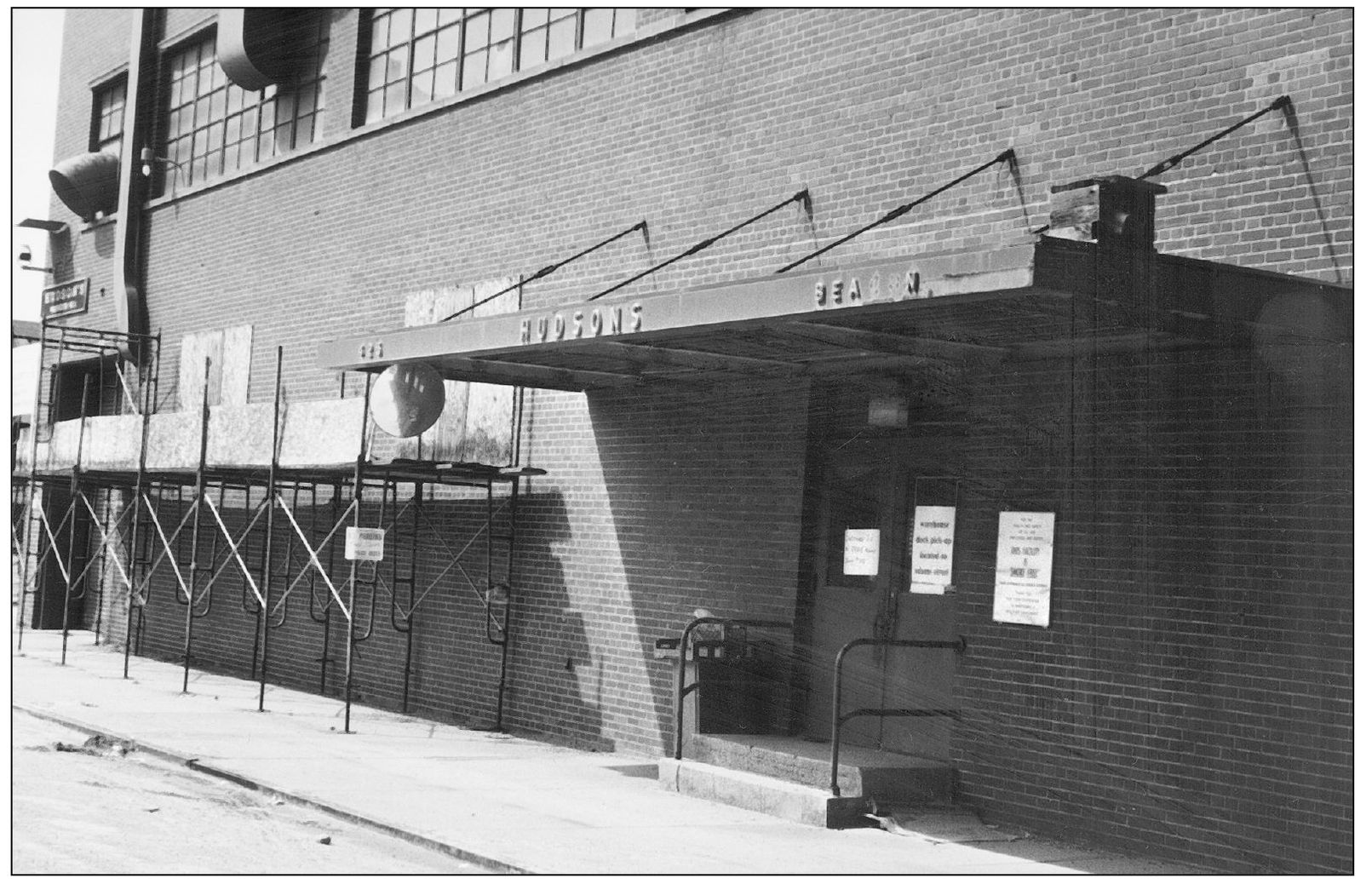
BEACON STREET ENTRANCE, 1999. In 1924, Warehouse no. 2 was constructed, and by 1925 the Hudson’s warehouse complex and distribution center encompassed 255,000 square feet. Primary functions at this facility, which employed 300 associates, were the distribution of merchandise, workrooms, and storage of reserve stocks. (Courtesy Michael Hauser.)
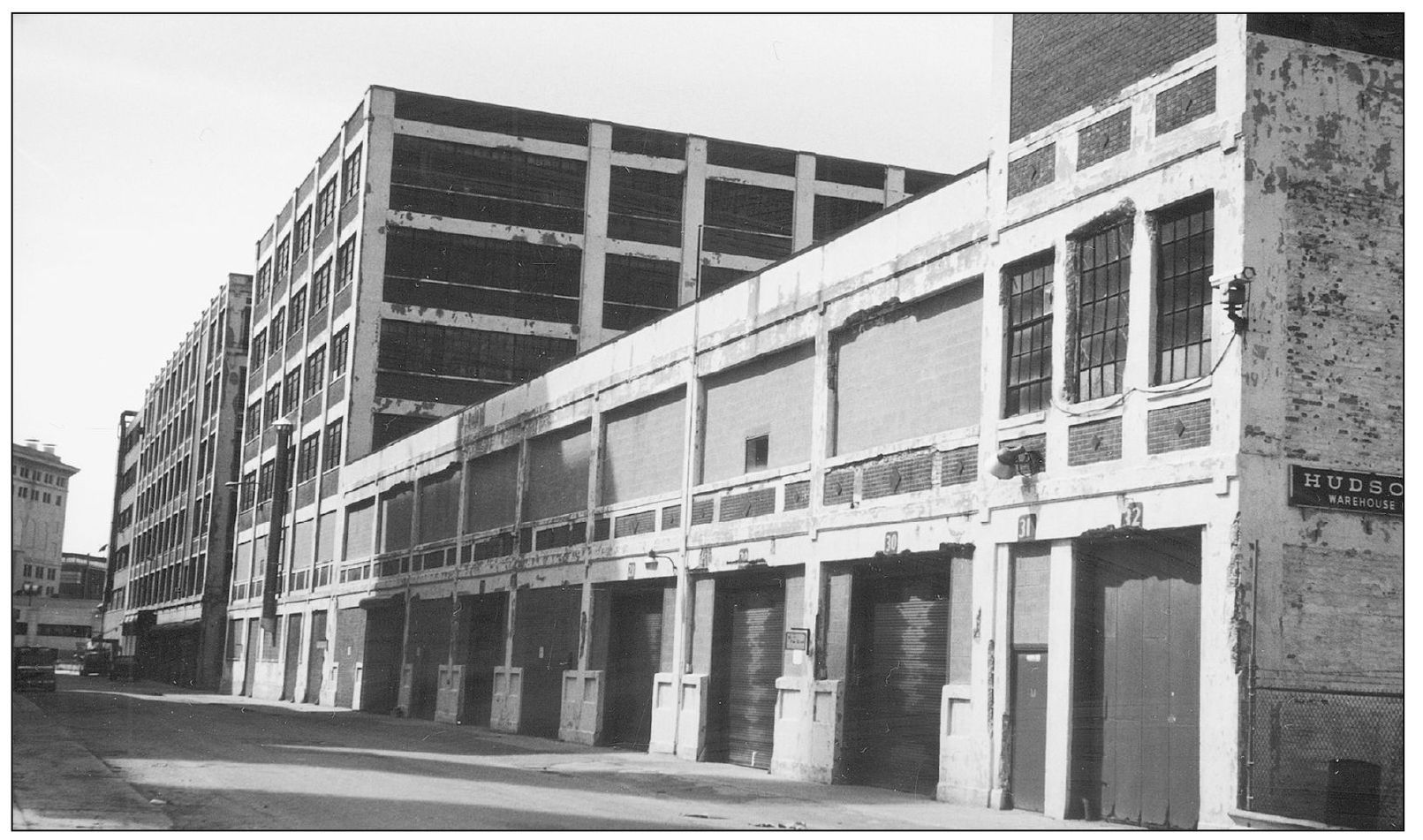
EXPANSE OF WAREHOUSE COMPLEX ON BEACON STREET, 1999. Hudson’s mammoth warehouse complex housed nearly 100 loading docks, delivery bins, routing rooms, and parcel post rooms on the first floor. The second floor was devoted to workrooms for all home furnishings departments, while floors three through six were reserved for large and bulk merchandise storage. (Courtesy Michael Hauser.)
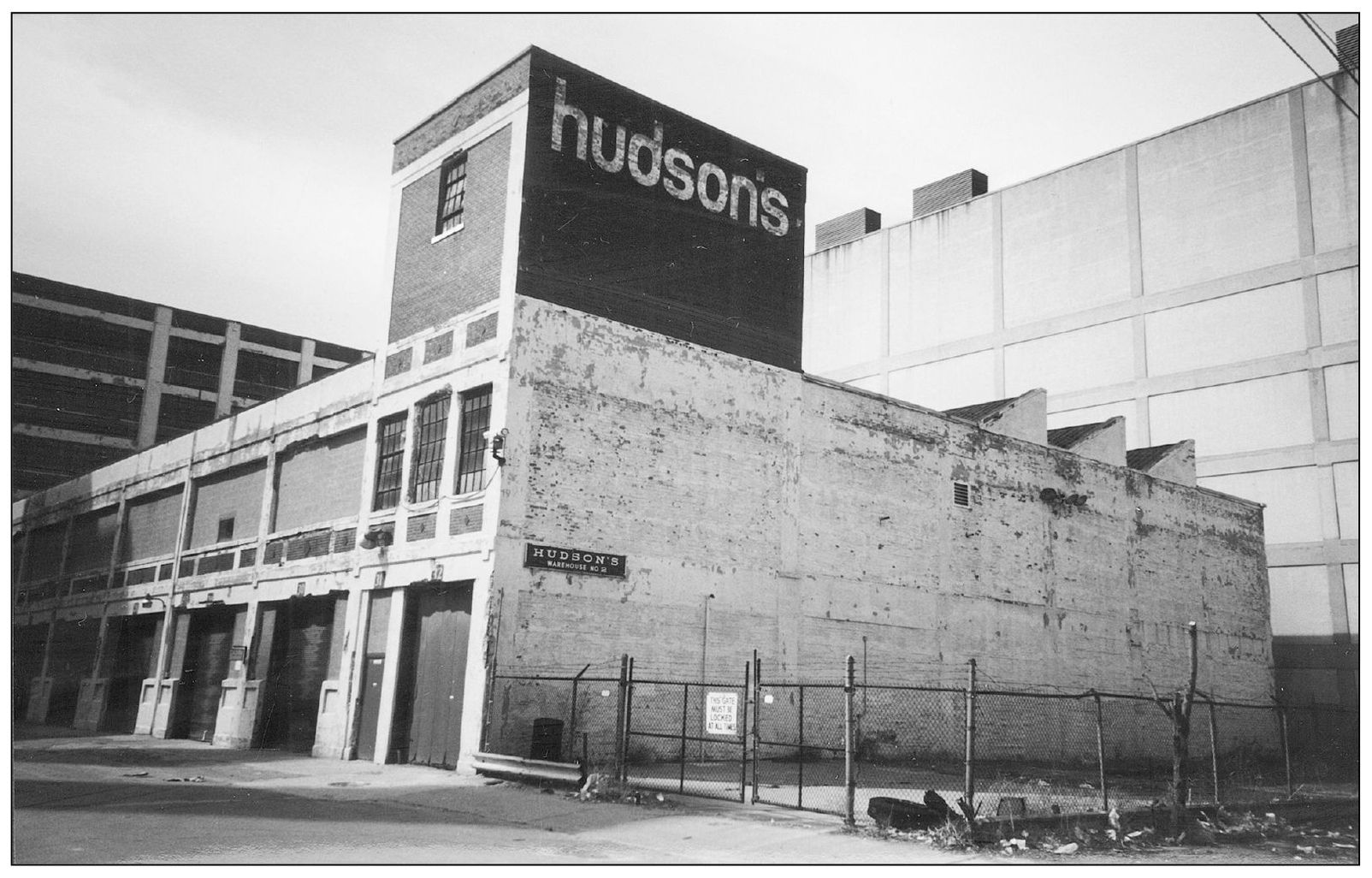
RECENT IMAGE OF ORIGINAL DISTRIBUTION CENTER, 1999. In the 1920s and 1930s, Hudson’s had over 90 trucks in operation for delivery of packages, parcels, appliances, and furniture. The store’s motor vehicles, operated by over 120 drivers, traveled 1.8 million miles a year and delivered 7.1 million parcels to 117 communities. (Courtesy Michael Hauser.)
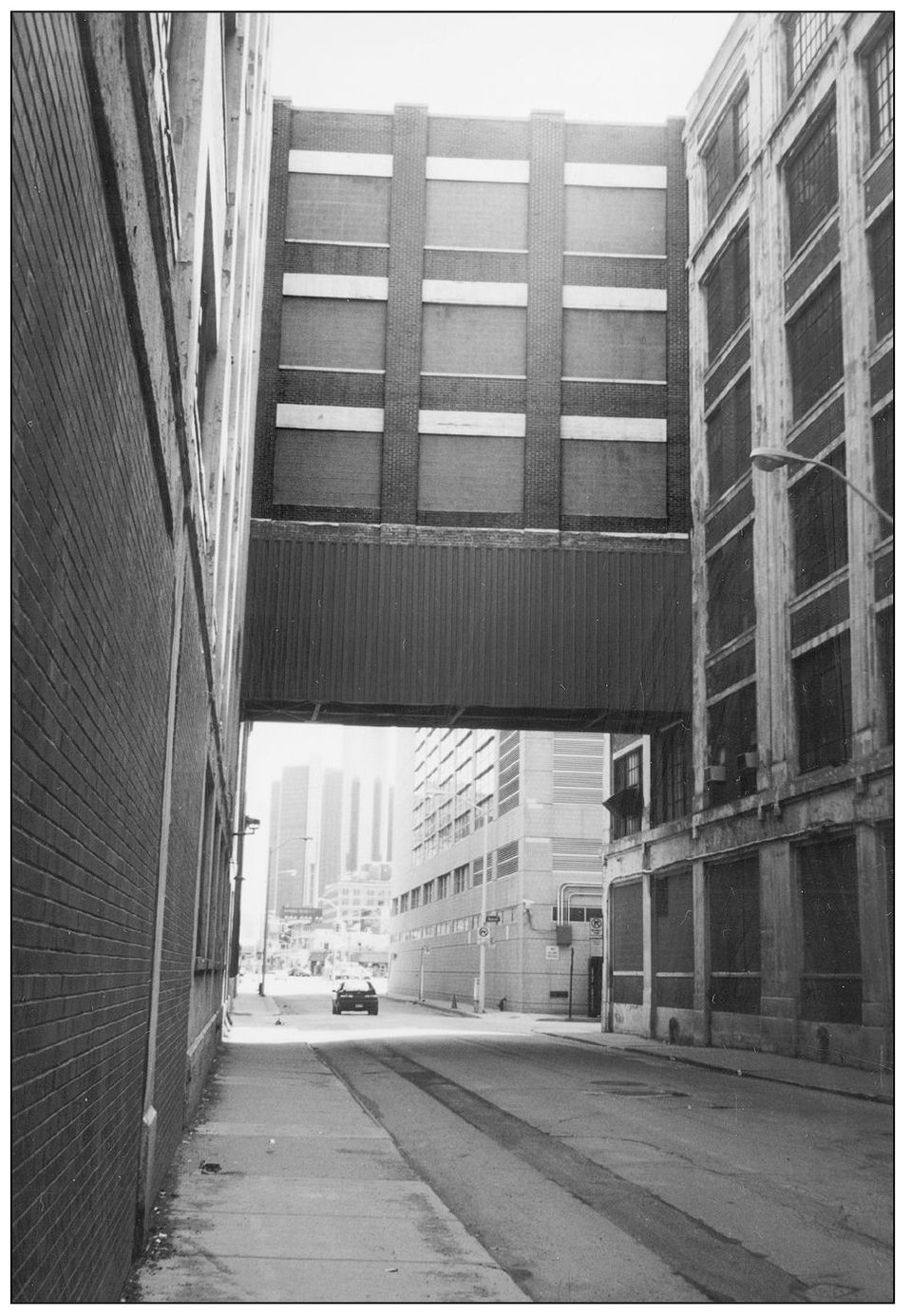
CROSSOVER WITH MADISON CENTER IN BACKGROUND, 1999. In 1937, the Madison Avenue delivery building was constructed between Beaubien and Brush Streets. Containing 160,000 square feet, the first three floors were designed for speedy package distribution with a modern conveyor system. The fourth floor was reserved for workrooms. (Courtesy Michael Hauser.)
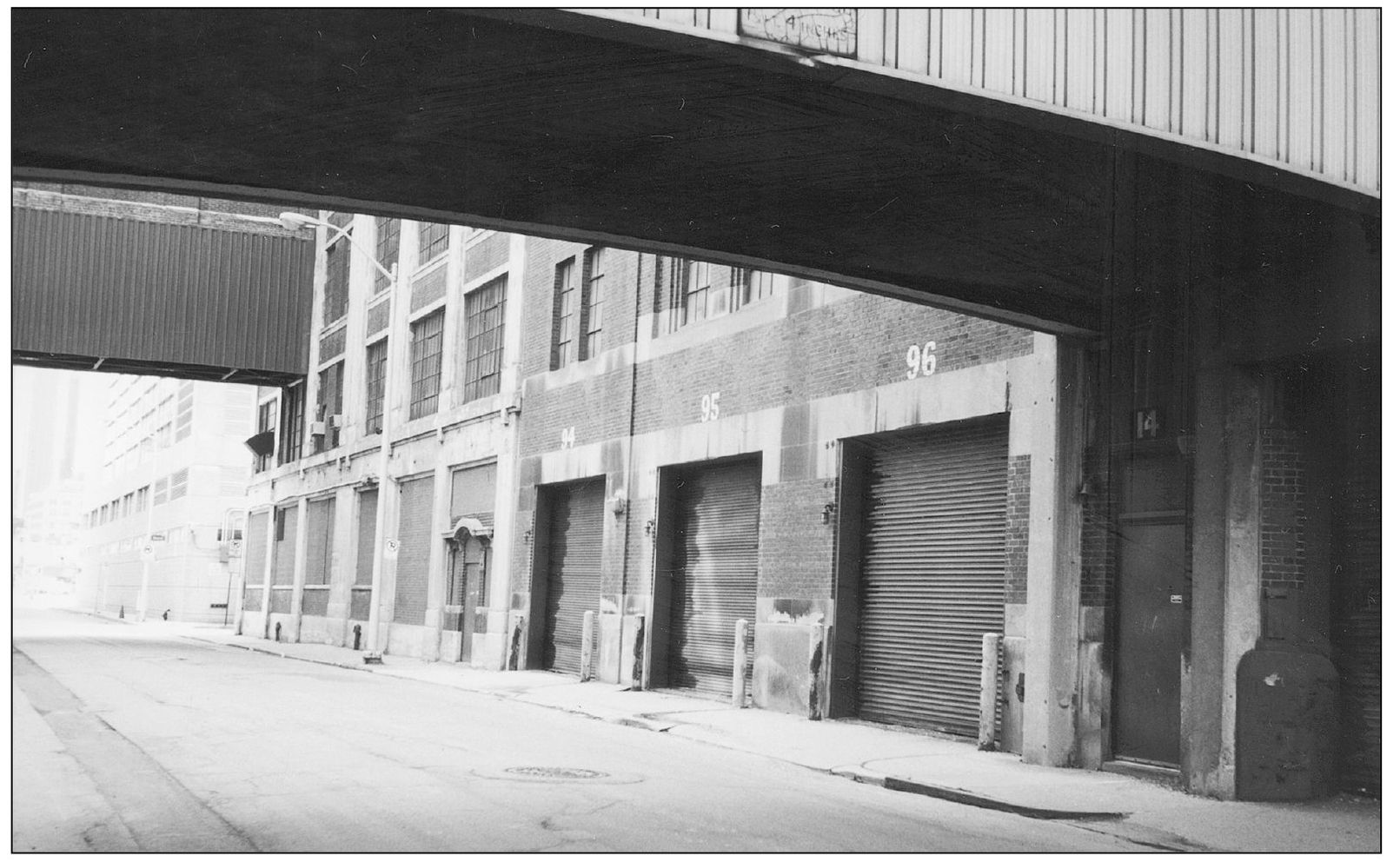
DOCKS AND CROSSOVERS, 1999. By 1945, Hudson’s Warehouse no. 1 now consisted of 785,000 square feet, filling out the entire block bounded by Adams, Beaubien, Beacon, and Brush Streets. In a year’s time, this warehouse would typically handle almost 400 truckloads of incoming merchandise, including almost 200,000 units of furniture. (Courtesy Michael Hauser.)
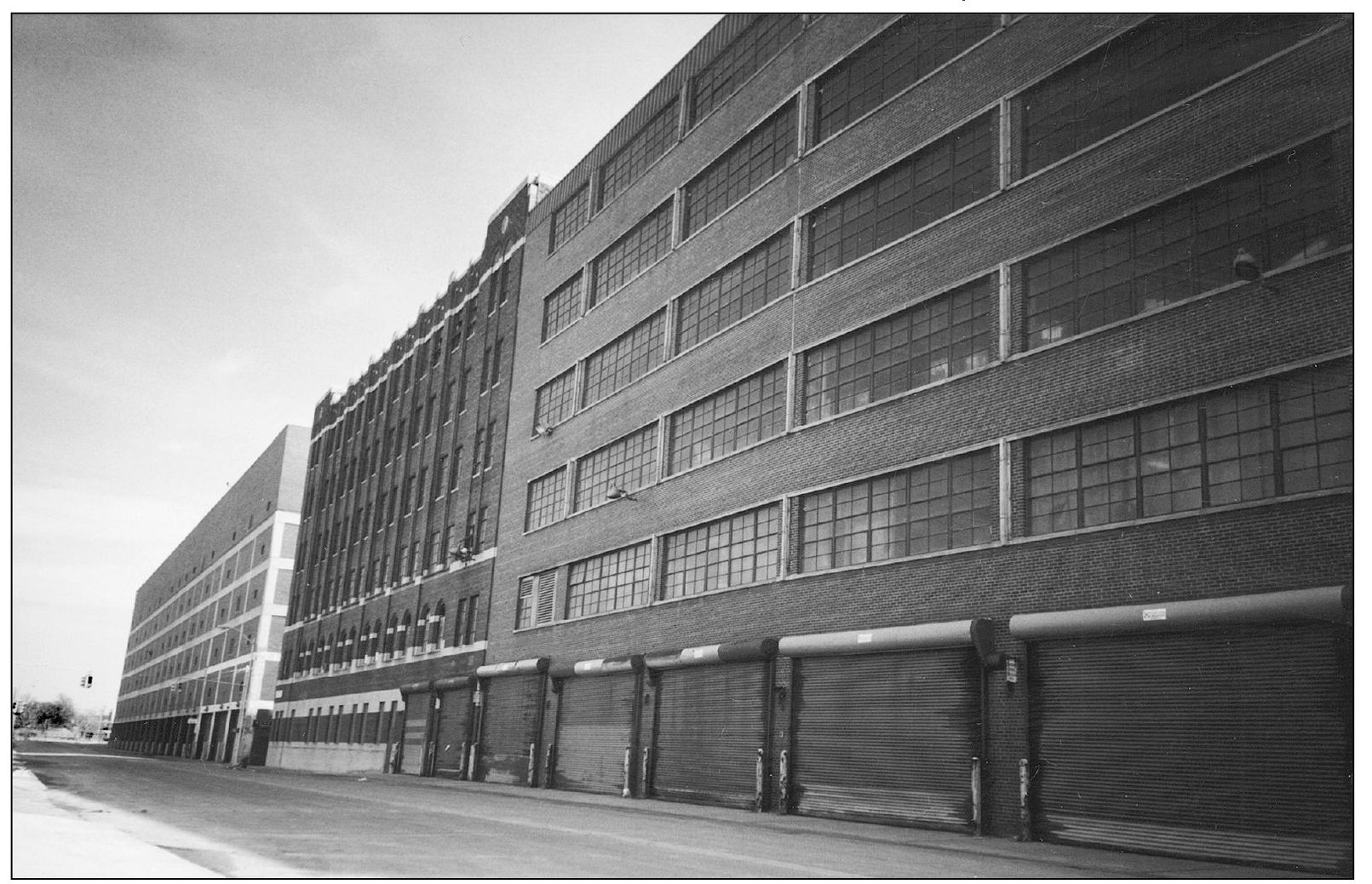
EXPANSE ALONG ADAMS STREET, 1999. Hudson’s warehouse compound by 1950 spanned 22 acres and employed several hundred associates. A branch unit of the downtown store hospital also opened here in 1950. As a result of ever-rising parcel delivery costs, a campaign was instituted to encourage “take with” transactions at the downtown store. (Courtesy Michael Hauser.)
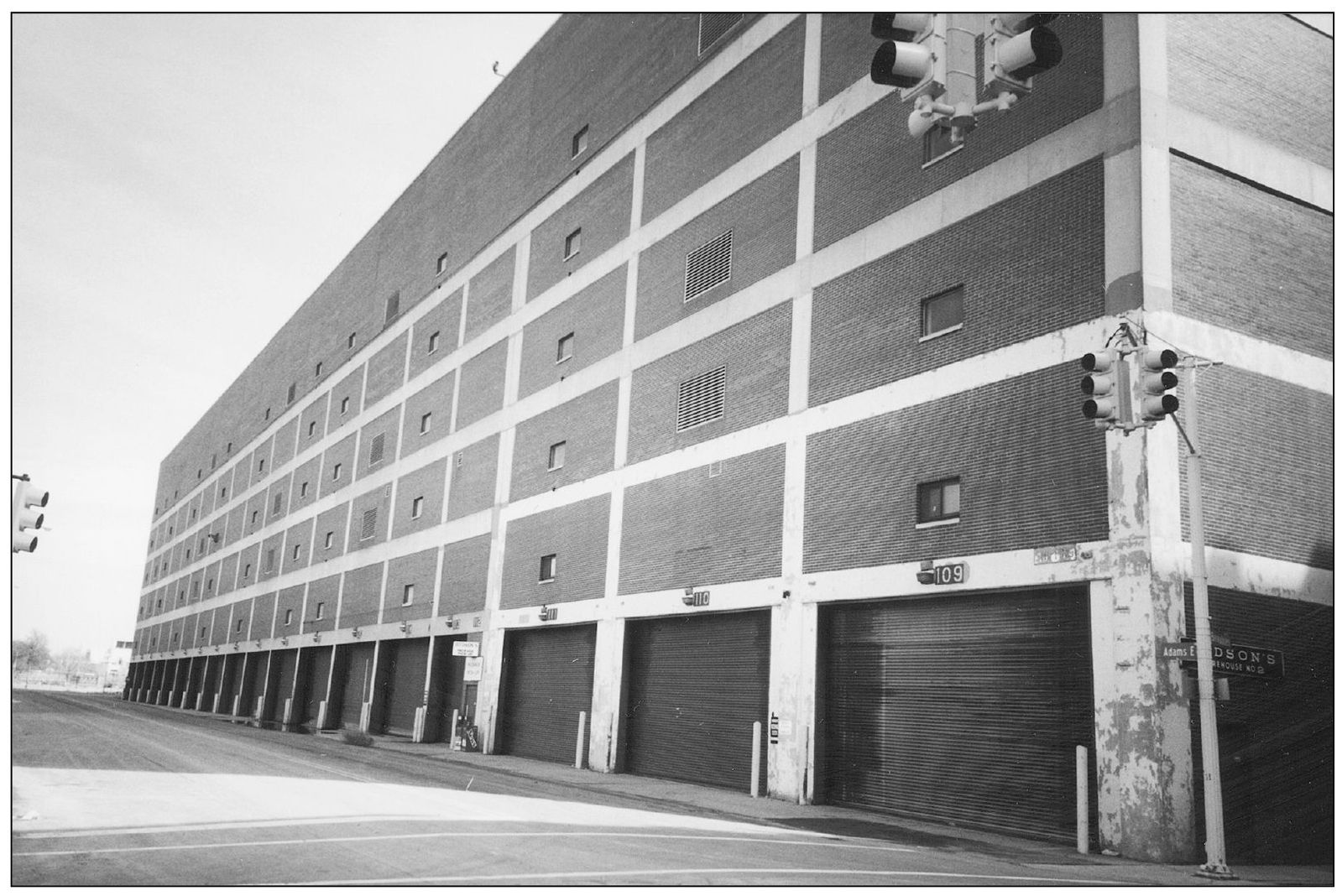
CLOSE-UP OF WAREHOUSE NO. 2, 1999. Hudson’s famous warehouse sales had their beginnings in the downtown store prior to moving over to the warehouse compound. Thousands of bargain hunters will forever remember riding the enormous freight elevators, with the smells of fresh popcorn and frankfurters wafting through the air. (Courtesy Michael Hauser.)
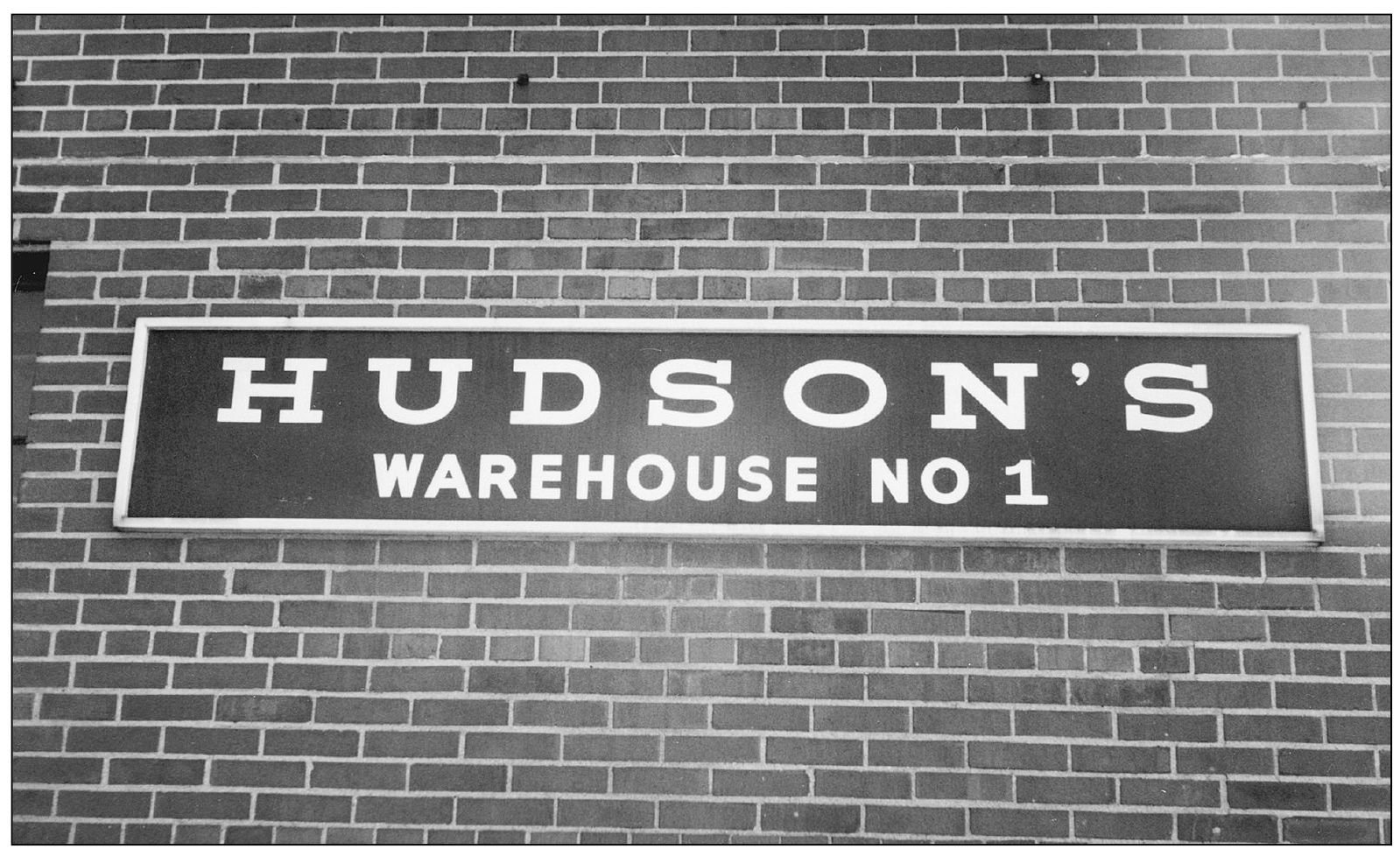
CLOSE-UP OF WAREHOUSE NO. 1, 1999. In 1954, three additional floors were added to this part of the compound, now boasting 25 acres and occupying six floors. Floor men were added on each level to assist warehouse supervisors. This additional space was needed to house incoming merchandise for Hudson’s new Northland store. (Courtesy Michael Hauser.)

MR. SHIRLEY AD, 1983. Hudson’s introduced Mr. Shirley in the early 1980s as a marketing tool for the warehouse sales. He appeared in television, radio, and print media. This decade also saw the furniture area greatly expanded and the addition of display props, VCRs, cameras, and merchandise from the Rainbow Budget Store. (Courtesy Michael Hauser.)
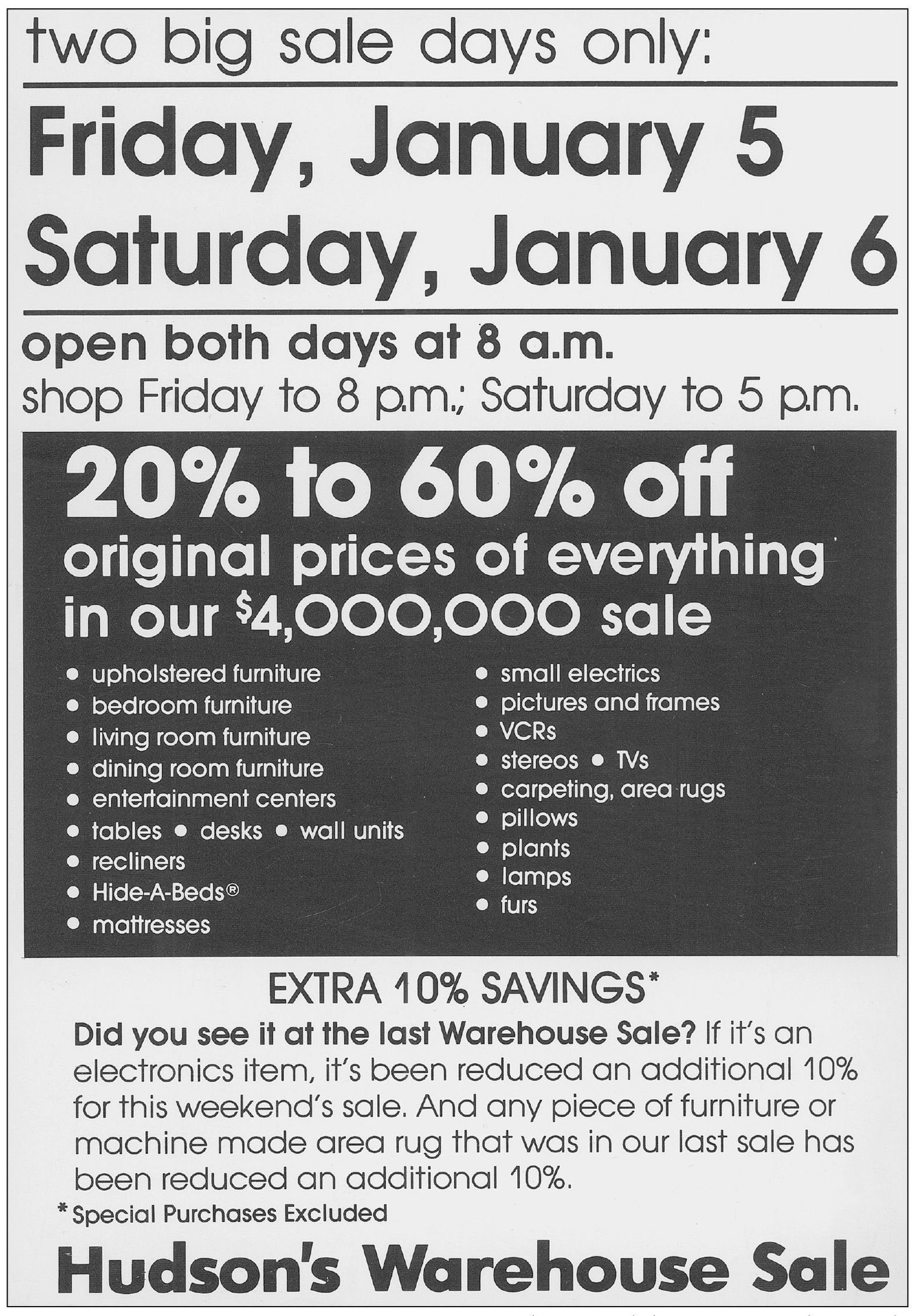
BAGGING SOME INCREDIBLE DISCOUNTS, 1983. Hudson’s final downtown warehouse sale commenced on May 2, 1998. The company sold the entire warehouse compound to clear the way for Ford Field, the new home of the Detroit Lions pro football team. This property was the last vestige of Hudson’s in the city of Detroit. (Courtesy Michael Hauser.)
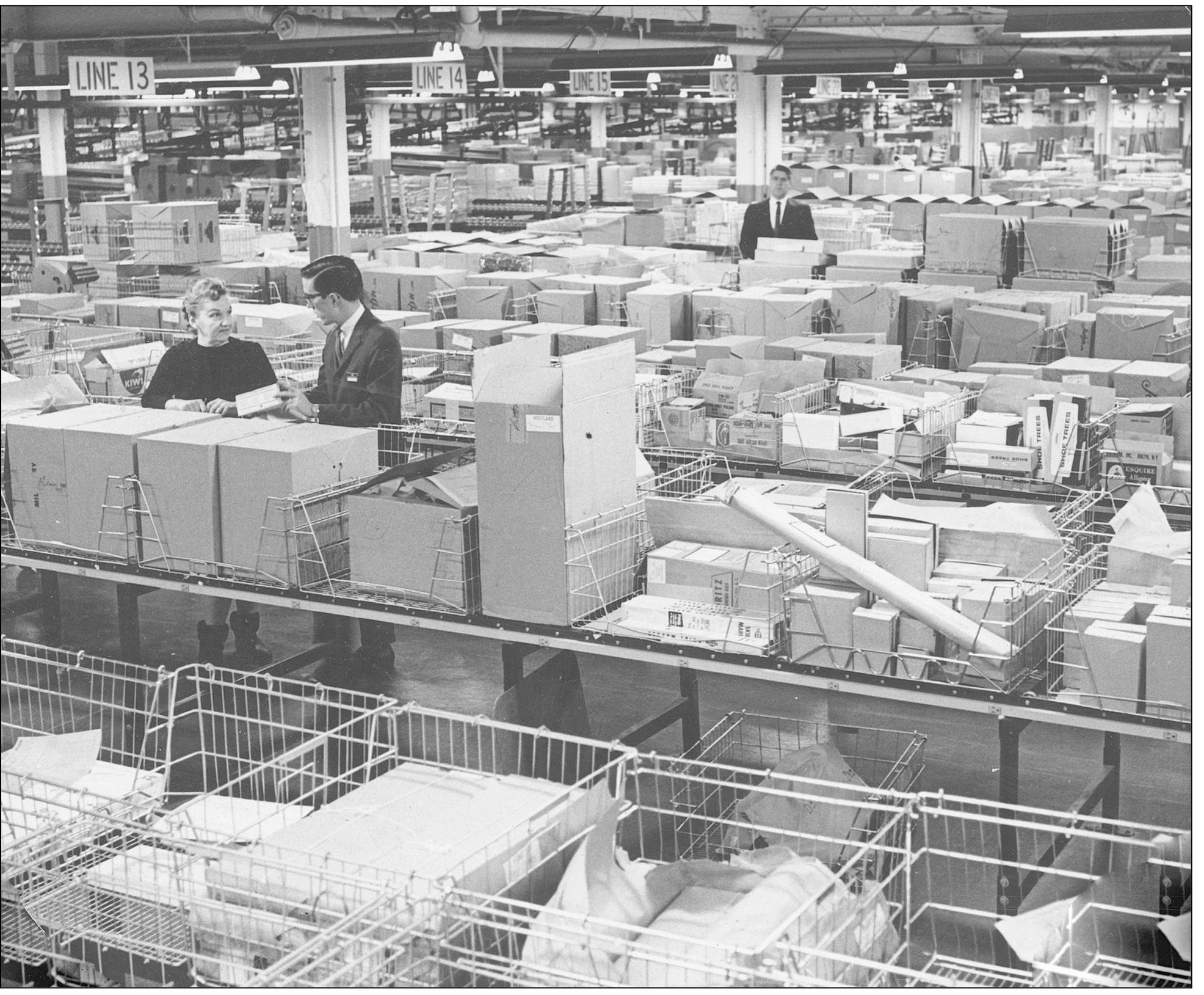
INTERIOR OF DISTRIBUTION CENTER, C. 1960. Through the years, Hudson’s operated warehouses and service centers all over town. Parade floats were assembled at Fort and Twelfth Streets, and large furniture fixtures were built at Clark Street and West Jefferson Avenue. Other facilities were at St. Antoine Street and East Grand Boulevard, on West Warren Avenue in Dearborn, High Street near Jefferson Avenue in Ecorse, and 230 East Grand River Avenue. (Courtesy Michael Hauser.)